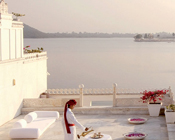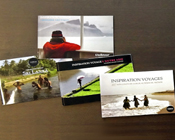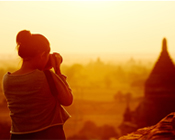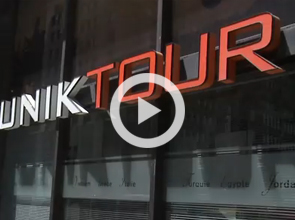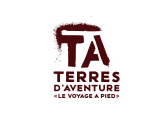Overview
FIND MORE TRIPS
- Semi-private adventure travel in Peru
- The Inca Trail is the most trekked road in Peru and is certainly one of the continent’s most spectacular routes. It is formed by a network of paths totaling more than 23,000 kms, all built by the Incas. Every year, we guide numerous individual travelers in Peru (with private local guides or in international groups) on the “Inca Trek”, which leads to the cultural citadel of Machu Picchu.
This individual & customized adventure trip begins in Arequipa. In the peripheral villages, amidst beautiful countryside, you’ll visit the town of Chivay, entry point to the Colca Valley and its magnificent landscapes and volcanoes. At Chivay, you’ll travel on your own to reach the Cruz del Condor, where you will take in extraordinary views of flying condors and the depth of the canyon…the deepest in the world!
Cusco, in the Andes, in the heart of the Inca empire, is a city offering countless opportunities to visit historical and archaeological sites. Cusco is also the starting point of the Inca Trail. You’ll experience a wide range of altitudinal gradients, crossing two high-altitude passes before reaching the “Gate of the Sun”, which provides access to Machu Picchu. The trek takes place amidst stunningly beautiful natural landscapes.
But Peru is not only an Andean country. Its tropical forests cover almost half of its territory. You will complete your individual adventure with a trip to the heart of the Amazon rainforest, accompanied by a local guide and accommodated in a very comfortable lodge. 4 days in an Ecolodge to enjoy photo safaris, treks through the Amazon (on foot and by canoe) and, most importantly, hammock naps while parrots sing in the background!
Don’t hesitate to consult with our specialist advisor for more information on this wonderful customized journey in Peru!
- Day 1 | International Flight
Flight to Peru. Meals and movies on board. Evening arrival and transfer to Miraflores. Overnight in Lima.
- Day 2 | Lima - Paracas (B, L)
Early morning transfer to Cruz Del Sur bus station. Approximate 3:30 bus ride to Paracas. Transfer to your hotel, then transfer to the Port of Paracas for an excursion to the Ballestas Islands by boat, known for their rich marine flora and fauna. In the afternoon, you’ll visit Ballaestas National Park, where the desert meets the sea. Overnight in Paracas.
- Day 3 | Paracas - Nazca - Arequipa (B)
Morning transfer to the bus station. Comfortable bus ride to Nazca (approximately
4 hrs). You should arrive around noon in Nazca (time to be confirmed). Hotel (small 2*) for the day, until your bus departs in the evening. Transfer to the small airport of Nazca, then fly above the enigmatic Nazca lines (about 45 minutes). Transfer to your hotel, situated 500 metres from the bus station, so no transfer required. Night bus “cama category” to Arequipa, with departure time to be confirmed. Overnight on bus.
- Day 4 | Arequipa
Early morning arrival in Arequipa, with transfer to your hotel in the colonial centre. In the afternoon, free time to visit the white city of Arequipa, considered to be the most European city in Peru, with its culture, its gastronomy and its unique architecture. Suggested visit to the Monastery of Santa Catalina, a city within a city, considered to be one of the largest and most beautiful colonial architecture works in South America. Overnight in Arequipa.
- Day 5 | Arequipa - Colca Canyon (B, L)
Your vehicle and guide will pick you up at 8:30 AM at your hotel for an expedition with a mixed anglophone group, heading towards the depths of the famous Colca Canyon, said to be the deepest in the world. Along the way, you’ll pass through Aguade Blanca National Park, with its vicuña, then stop at a pass rising 5,000 metres above sea level to admire the region’s major volcanoes. Next, you will plunge into the Colca Valley, which eventually becomes a canyon. Typical dinner in the village of Chivay, highlighted by its multiple cultures. In the afternoon, swim in the Chivay hot springs. Overnight in the village of Chivay.
- Day 6 | Colca Canyon - Puno (B, L)
Departure from Chivay and on to Cruz Del Condor, comprised of a path featuring numerous observation points overlooking the canyon and the condors, kings of the Andes. The Cruz Del Condor is the best place in the world to observe the condor in its natural habitat. Pass through several villages along the return to the village of Chivay, where you can swim in the region’s natural springs. Dinner at Chivay. Tourist bus to Puno. A francophone contact will meet your bus, provide information and take you to your hotel in Puno. Overnight in Puno.
- Day 7 | Puno - Lake Titicaca (B, L, D)
Breakfast at hotel. Transfer to the Port of Puno for a two-day pure adventure cruise in the emerald waters of Lake Titicaca, with a mixed international group and an anglophone guide. Visit the fascinating floating islands of the Uros community. Leave the Bay of Puno and sail on to Amantani Island, which was isolated for centuries, to gain an understanding of its culture, lifestyle and philosophy. Integrate with a local family to learn their customs. One-hour walk to the highest point of the island to watch the sun set. In the evening, dance to typical songs of the island in the village square. Overnight home-stay, but with your own private room.
- Day 8 | Lake Titicaca - Puno (B)
Lunch on the island. Depart from Amantani Island by boat and head to nearby Taquile Island. Walking tour of Taquile Island to take in its culture. Return in the late afternoon to the Port of Puno. Transfer to your hotel. Overnight in Puno.
- Day 9 | Puno - Cusco (B, L)
Breakfast at the hotel. Transfer from your hotel to “First Class” tourist bus. You’ll depart the arid plateaus of the altiplano and travel on to the La Raya Pass, near the glaciers of the Cordillera Vilcanota, and descend into the broad green valley of Cusco. On the way, visit Pucara, the impressive Inca ruins of Raqchi and the famous chapel of Andahuaylillas. Lunch stop halfway. Arrive at approximately 17:00 in Cusco. A representative will meet you upon exiting the bus to take you to your hotel. Overnight in Cusco.
- Day 10 | Cusco (B, L)
In the morning, visit the imperial city of Cusco, a designated UNESCO World Heritage Site, with your private local francophone guide to discover the various eras of the city, from its Inca face, to its colonial side, inspired by the baroque movement, to its modern side, not to mention its colorful markets. In the afternoon, visit Sacsayhuaman Archaeological Park, which includes the impressive Inca fortress of Sacsayhuaman, the Water Temple, the Temple of the Moon and Pucapucara, for a plunge into the Inca world and their beliefs. Overnight in Cusco.
- Day 11 | Cusco - Sacred Valley (B, L)
Breakfast at the hotel. Full day to explore the wonders of the Sacred Valley. Along the way, visit the Awanacancha textile centre and the Zoolojco animal shelter. Several panoramic viewpoints during descent. Explore the ruins of Pisaq, a site perched high in the mountains and providing an eagle’s eye view of the valley. Situated on a ridge ranging more than 2 kms long, this is the most impressive Inca site in Peru, after Machu Picchu. You can later descend the ruins with your vehicle and your private francophone guide, or via the 1,050 stone steps used by Inca priests in the era to walk to the holy river. At the bottom, visit the village of Pisac and its ancestral craft market, one of the finest in Peru. Free shopping time at the market. Dinner included. Afternoon return to Cusco.
Private vehicle. Private francophone guide. Overnight in Cusco.
- Day 12 | Inca Trail - Day 1 (B, L, D)
Depart from Cusco in the early morning with your anglophone guide and mixed international group along the way to the trek entrance (2 hour drive).
The hike begins quietly. After a few minutes, you’ll cross the Cusichaca suspension bridge (built with steel cables) over the Urubamba River. On the left side of the trail, you’ll follow the river through a forest of eucalyptus before reaching the archaeological remains of Llactapata.
Llactapata, or “upper village”, is an archaeological complex located at the foot of a mountain on the left bank of Cusichaca River, a tributary of the Urubamba River. This site includes many Andean terraces, most probably used to feed the inhabitants of other cities, and “Tambos” (warehouses) of the Inca Trail. The urban area has more than 100 structures, including an Inca altar called “Pulpituyoq”.
The climate is generally hot and the beautiful landscapes are coloured by the region’s broom. Broom is a native plant of North Africa, with sticky seeds that adhered to the hooves of Berber horses, which were sent to America. Camp at Huayllabamba. Huayllabamba, or “green meadow”, is a small native village on the slopes of a mountain, surrounded by fields of corn and potatoes. Most groups camp for the first night in the village, which has public toilets and plenty of water. The first day may be cloudy or rainy. The hike is fairly easy on a beautiful and near-flat route.
Camp overnight.
Day 13 | Inca Trail - Day 2 (B, L, D)
This is the most difficult part of the trek and involves a steep ascent to the abra of Warmihuañusca (literal translation in Quechua: “place where women die”) at 4,200 metres of altitude. Walking is difficult due to the constant rise in the steep slope leading up to the abra (the neck). Along the way, the natural environment changes. You’ll pass through the tempered valleys with pastures without trees of the cold puna.
Before coming to the abra, you’ll come across a camp named “Llullupampa”, situated in a valley surrounded by two crystal clear streams. You can rest for a while before resuming the march to Paso de Warmihuañusca . It’s at this point where you may feel the most soroche, or altitude sickness, characterized by slight dizziness and shortness of breath.
The area is characterized by strong, cold winds. After crossing the abra, take a rest before moving on to the Pacaymayo River valley. There you will find a small waterfall, a camp and public toilets, perfect for dinner. You will pass through a second passage, or abra, on which you will find the archaeological ruins of Runkuracay, located at 3,800 metres of altitude. Runkurakay owes its name to its semi-circular shape, protecting it from strong winds in the area. The complex has a single entry with 7 accesses to 7 different rooms. Descend to to Laguna Yanacocha (Black Lagoon), where you will arrive at Sayaqmarca, or the “dominant village”. This Inca ruin is situated on a cliff top, offering spectacular panoramic views of the Acobamba Valley and snow-covered peak of Pumasillo. This construction is a maze of very narrow passages, some with exits and others without, with its only access being via a steep, solid stone staircase, situated on the edge of the mountain. Covered on one side by an abyss of exotic plants (orchids and lichens). Camp overnight at Chakicocha.
On the first day’s march, the road appears barely visible, due to its gradual degradation. On the second day, the path is much better defined, like a paved street, with steep staircases constructed of almost vertical steps.
Camp overnight.
Day 14 | Inca Trail - Day 3 (B, L, D)
The trail begins to climb again. You’ll discover the first tunnel , a sloping path measuring 20 metres in length, with steps carved into the rock. Continue with your ascent to the third and last abra (passage), leading to the citadel of Phuyupatamarca. The “village above the clouds” is one of the most original Inca Trail citadels. It is surrounded by the cloud forest (Yungas) and is situated on a gorge overlooking the Urubamba. The village is characterized by its many Andean terraces and ceremonial sources of fresh water.
On sunny days, you can take in the scenery of the Urubamba Valley and its adjacent glaciers. Near the Phuyupatamarca passage, the trail turns downhill on massive snail-shaped steps, passing through a second tunnel.
Wiñayhuayna, or “forever young”, is located 2,644 metres above sea level. It is probably the most attractive citadel along the Inca Trail, and the last town before Machu Picchu. It is composed of four main areas: the urban sector (at the bottom) with more than 20 structures, the Ritual Sources area, the Terraces and culture sector and the Tower sector. The architecture of the latter structure is the finest of all in the complex.
Camp overnight.
Day 15 | Inca Trail - Day 4 - Machu Picchu - Cusco (B)
It’s important to take the time to visit the archaeological remains and to soak in the environment. It’s unfortunate, but some busy travelers who arrive at Machu Picchu don’t stop to explore the many ruins along the road.
The Incas always built their fortresses in places where they could see without being seen, attack without being attacked. The mysterious citadel of Machu Picchu, located on the edge of the jungle, is very difficult to find. On this last stretch, you will see the Urubamba River.
After 3 hours of walking, you’ll reach the Intipunku, or “Sun Gate”. This small complex of buildings served as checkpoints, or observation points. It is here that you can finally wrap your head around the collective splendor of the lost city of Machu Picchu. This location is ideal for taking pictures that provide a perspective of the entire site.
If you start walking early, you will arrive at dawn. Sunrise is the best time to contemplate the majesty and grandeur of Machu Picchu, the Sacred City of the Incas. After a visit, including explanations of the site’s different areas, and if your legs are not too sore, you can climb Huayna Picchu, the cone-shaped structure overlooking the site which served as an ancient Inca astronomical observatory.
Descent from Machu Picchu by bus (20 minutes) to the village of Aguas Calientes. Return to Cuzco by train (5 hrs). Arrival in Cuzco at 21:00 in the evening. Private transfer from train station to your hotel.
Note: the ascent of Huayna Picchu is restricted to a maximum of 400 visitors per day, so please indicate your desire to include this excursion when booking.
- Day 16 | Cusco - Puerto Maldonado (B, L, D)
Breakfast at hotel. Private transfers by mid-morning to the airport. One-hour domestic flight to the small city of Puerto Maldonado, deep in the jungle. From the airport, your welcoming lodge will take charge of your jungle stay. Trip to the city to make any last purchases. One hour bus ride to reach the Madres de Dios River, where you will take a 2 hr canoe trip to reach the lodge in the heart of the jungle. Each lodge has a unique program which will be explained to you upon your arrival. You’ll be paired with an anglophone guide and a mixed international group. Be warned, the jungle is hot, so activities and tours start very early. The jungle is not an easy route to conquer, but it is a truly enriching experience. Night in a bungalow.
- Day 17 | Jungle - Tambopata National Park (B, L, D)
Your first morning in the cool dampness of the jungle, with the cries of howler monkeys in the distance. Your first day of guided activities. You’re in the heart of Tambopata National Park, in true virgin jungle. Night in a bungalow.
- Day 18 | Jungle - Tambopata National Park (B, L, D)
Daytime guided activities, three meals included. Night in a bungalow.
- Day 19 | Puerto Maldonado - Lima - Departure (B)
Midday departure from the lodge to return to Puerto Maldonado. Flight Lima. Your anglophone guide will meet you at the airport to start your Lima city tour. Starting in Larcomar, you’ll move through the picturesque district of Barranco, a former fishing village that has been absorbed into the sprawling city of Lima and has become a university district sporting an active nightlife. Walking tour of Barranco with a visit to Ermita Church and the famous Bridge of Sighs, the descent of the baths and Santissima Cruz Church.
Onward to the colonial centre to visit “the King City”, the Spanish colonial centre, with Plaza San Martin, Plaza Mayor, with its most significant buildings, including Government Palace, the Cathedral, Arzobiscal Palace...etc. Visit the city’s catacombs, dating back to the 17th century. End your visit at the bus station. Transfer to Lima airport 3 hrs before your international flight.
| Fares (on-site) | |
|---|---|
| Price per person | 6200$CAD |
** Budgets displayed on this website are provided for information purpose only and do not have any contractual value, Uniktour cannot be held responsible for any consequences related to this information (departure dates are not indicated). Fares are led to change on a regular basis, depending on exchange rates and the fluctuation in the hospitality industry. For a precise quotation, you may click here.
** Fares applying to the on-site itinerary are not subject to applicable GST (TPS) & QST (TVQ). The displayed budget does not include 0.1% FICAV contribution (The Compensation fund for customers of travel agents)
| Other fees | |
|---|---|
| International Flight | Contact us |
| Deluxe travel insurance (estimated cost) | 467 $ |
| Deposit required for land portion. | 1855 $ |
| Single occupancy supplement | Contact us |
- The land portion budget for this trip includes:
- The following domestic flights: Cusco / Puerto Maldonado / Puerto Maldonado / Lima
- 10-nights accommodation in 3* standard, 1 night homestay, 3 nights in a tent and 3 nights in lodge
- 37 meals
- All ground transportation and transfers as indicated in the itinerary
- All activities indicated in the itinerary
- All entrance fees to activities, except at the Tambopata Reserve in the Amazon (+/- $10)
- On-site french-speaking representative in Peru 24/7, in case of emergency
- Trek-
- Private vehicle transfer at the beginning and end of the trek
- All meals and snacks during the trek
- Local anglophone guide
- All entrance fees to all sites, including Machu Picchu
- Cooks, porters, mules and muleteers
- Tent, kitchen equipment, kitchen tent and common eating tent with bench, oxygen cylinder, first aid kit and numerous tools
Note: A technical sheet will be provided to travelers upon confirmation of travel to help properly prepare.
- The land portion budget for this trip does not include:
- Airport departure taxes
- Meals not indicated in the itinerary
- Drinks
- Personal expenses
- Travel insurance
- Tips for guides and drivers
- Anything not indicated in the ‘The budget for this trip includes’ section above.
Next departure dates for this travel
- Sacred Valley and Machu Picchu
Close to Cuzco valley, the Urubamba River sculpted a deep valley on the other side of a small mountain range that leads into the jungle. Many villages line the shores of this river, including Pisaq, Calca, Urubamba and Ollantaytambo. This is the Sacred Valley. At an average altitude of 3000 meters, this valley was once served as a granary for the Incas, which explains why it was considered sacred. To protect themselves from attacks by neighboring jungle tribes, the Incas built many fortresses here, many of which are still visible to this day. On top its magnificent ruins, this valley also presents visitors with rural landscapes of an exceptional beauty, where farmers go about their daily routines as they did at the time of the Incas, unperturbed by the progress of the last centuries. This rural universe offers you a breath of fresh Andean air and a religious perspective on the Cuzco region. Past the fortified village of Ollantaytambo, the valley becomes very narrow and sinuous, diving deeper and deeper into the jungle. There are no roads. Only a train allows visitors to follow the course of the river to the village of Aguas Calientes, at the foot of the mountain on which rests mythical Machu Picchu. Even though this mysterious citadel is the most popular tourist destination in all of South America, you will not be able to resist its charms. Still today, researchers are unable to reach a general consensus regarding why and how this incredible site saw the light of day. Regardless, this visit will certainly allow you to appreciate the genius of this civilization, whose contact with the greedy West would prove fatal. The area around Cuzco is filled with unlimited possibilities: mountain biking (slow descent, minimal effort) for a few hours, or a few days; 1- to 3-day rafting trips; horseback rides lasting anywhere between one hour and five days; trekking on Inca trails for two to ten days; and half-days or full days spent hiking and discovering the beauty of the region’s Andean culture in the perfect harmony with nature (no need to sleep in a tent).
- Titicaca Lake
Halfway between Arequipa and Cuzco, an immense body of water lies at an altitude of 3900 meters: lake Titicaca. Were it not for the reflections of the Royal Range’s snowy peaks, its turquoise waters could almost be mistaken for those of the Mediterranean. According to Inca legends, the first Inca came from the waters of this lake. For them – and for today’s Andeans – the lake is sacred and is the source of all life on earth. In the area surrounding the lake, the descendents of the Aymera still thrive and speak Aymara language, whereas the descendents of the Incas speak Quechua. The Aymeras have their own culture, beliefs, language, dances, and music, all influenced by the lake’s marine environment. Puno, the largest city on the shores of Titicaca, is often considered the capital of the lake and of Aymaran culture. This is where visitors hop on a boat and discover the stunning universe of Lake Titicaca, including the surprising Uros community, who to this day still live on islands made from reeds. There is also Taquile Island, where the men spend part of the day knitting, and Amantani Island, known for its hospitality. Each community has its own rules and customs. For example, in Taquile, your life is written on your clothes: a red band on her hat means that a woman is married, three green dots on this band means that she has three daughters, and one yellow dot means she has one son, etc. It is possible to spend the night on one of these islands, under a sky bursting with stars. All around Puno, visitors can explore some important pre-Inca ruins, such as the tower-like tombs of Sillustani.
Arequipa, the White City
The country’s second-largest city, Arequipa has its own universe and its own culture. Earning its nickname of white city from the color of the walls of its colonial town, it is also home to the largest population Spanish descendents in the country, as very few Andeans live here. Arequipa is considered the gateway to the Andes: the country’s main roads pass through this city before climbing up to the Andes, joining up with Titicaca Lake, Cuzco, and Bolivia. This city has one foot in the mountains and the other in the desert. With an altitude of 2000 meters, it is a perfect place to start the acclimatization process before entering the Andes. On top of its beautiful colonial town and its unique way of life, the region surrounding Arequipa is rich with a wide variety of landscapes and cultures. With a peak rising to an altitude of 5800 meters, the country’s largest and most beautiful fire mountain, Misti volcano adds even more magic to the city. Not too far away, Colca canyon, one of the world’s deepest, is home to small Colca villages, thermal pools, the largest Condor colony in the Andes. Countless hiking trails allow visitors to truly appreciate the region’s superb scenery. Spending the night in the canyon is an unforgettable experience.
Our Country Specialists
![]()
Steve Corriveau
Each travel consultant is specialized in the country or geographical area for which he is responsible for.

 1 (866) 722-0909
1 (866) 722-0909
 QUOTE REQUEST
QUOTE REQUEST 




